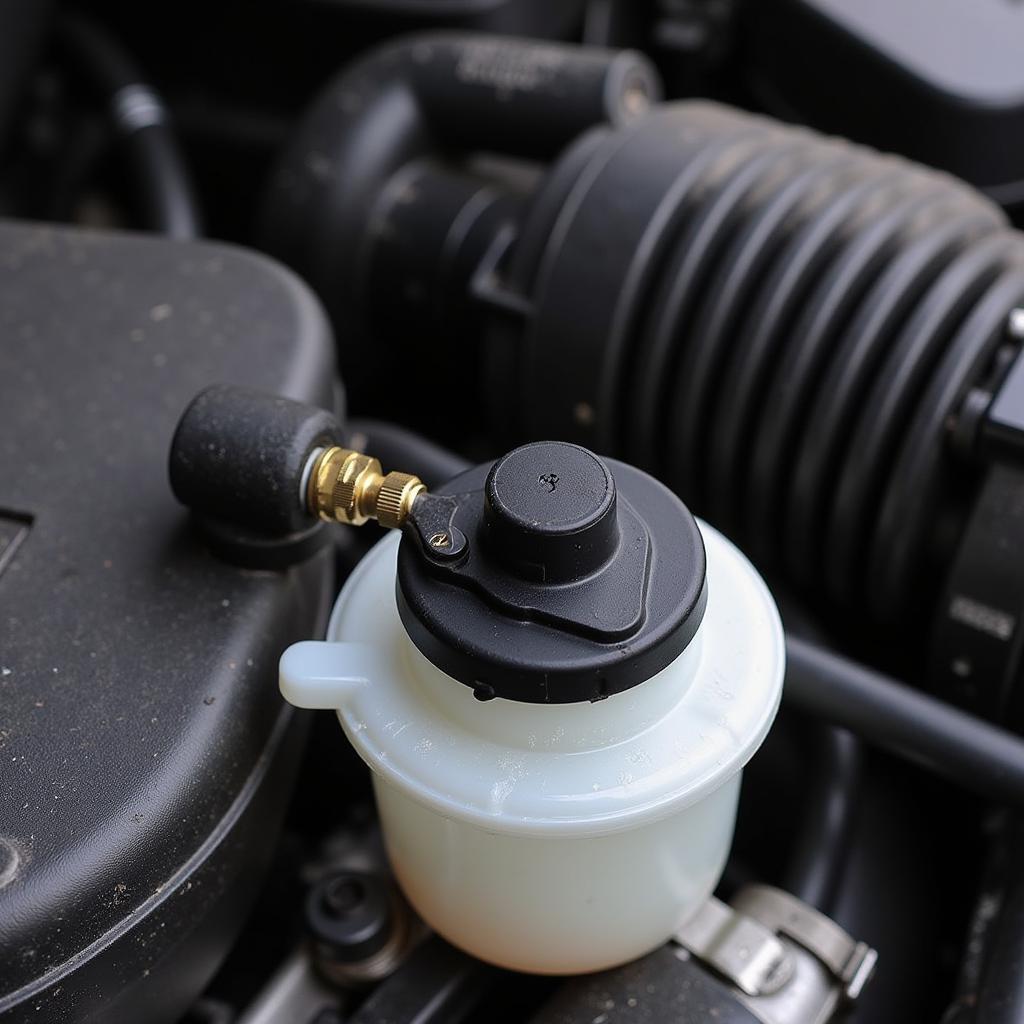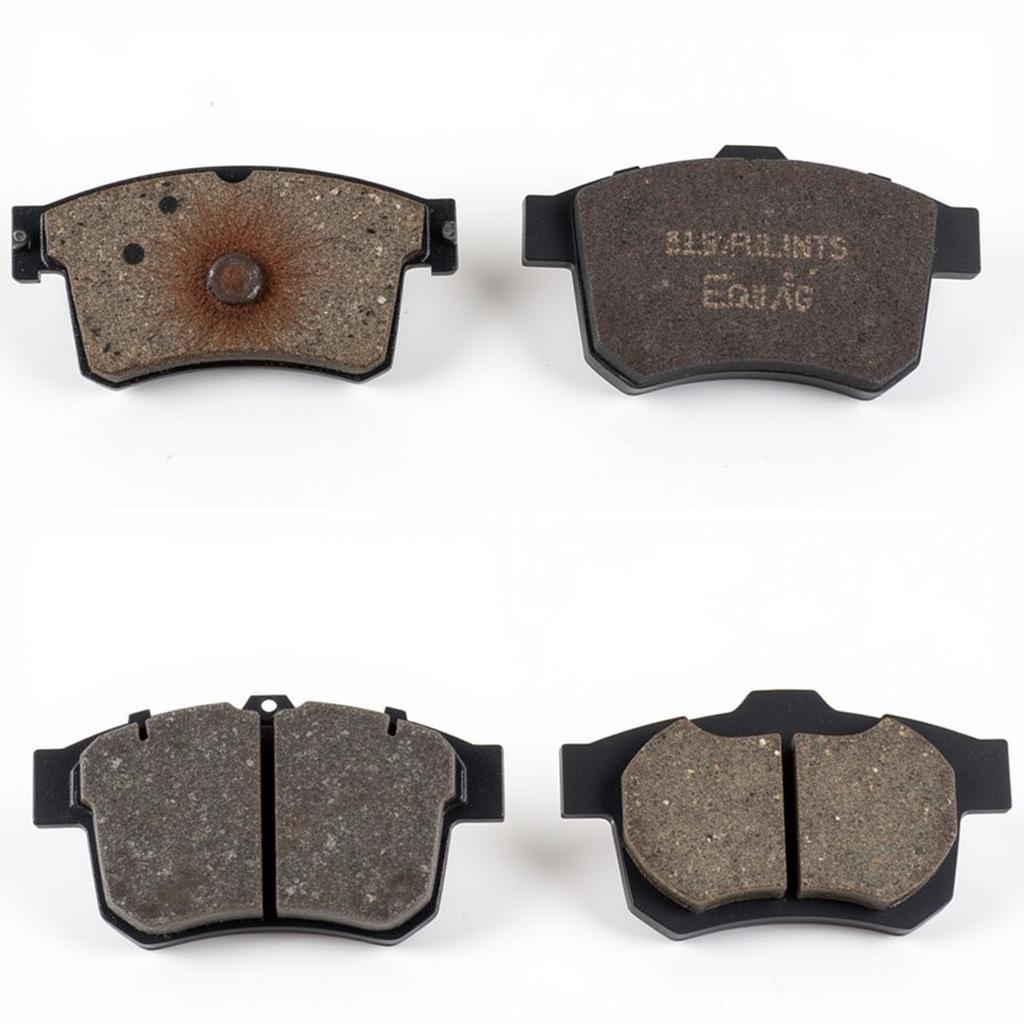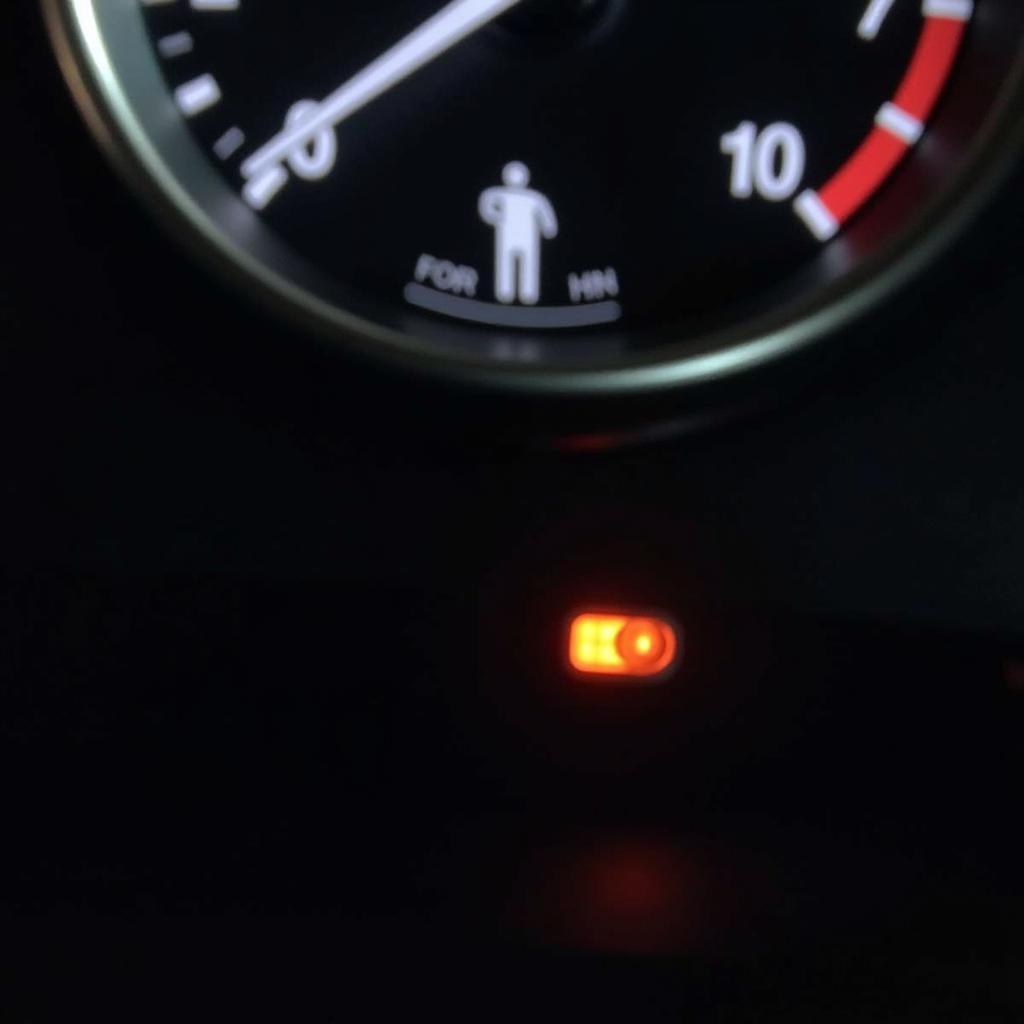A glowing brake warning light on your dashboard can be a nerve-wracking experience. While it often signals a problem within your braking system, it doesn’t always mean complete brake failure is imminent. To understand what triggers this warning, it’s important to know which sensors play a crucial role. The two main culprits are the brake fluid level sensor and the brake pad wear sensor.
Understanding the Brake Fluid Level Sensor
The brake fluid level sensor, as its name suggests, monitors the amount of brake fluid in the master cylinder. This fluid is the lifeblood of your braking system, transmitting the force from your foot on the brake pedal to the wheels, ultimately stopping the vehicle.
 Brake fluid level sensor in a car
Brake fluid level sensor in a car
How it Works: Imagine a float attached to a switch inside the master cylinder reservoir. As the brake fluid level drops, so does the float. When the level gets critically low, the float triggers the switch, illuminating the brake warning light on your dashboard.
Why it Matters: A drop in brake fluid level often indicates a leak somewhere in the system, which could lead to reduced braking performance and potential failure.
The Role of the Brake Pad Wear Sensor
Your brake pads are your first line of defense when it comes to stopping your car. Over time, these pads wear down due to friction. That’s where the brake pad wear sensor comes in.
 Worn brake pad with sensor
Worn brake pad with sensor
How it Works: This sensor is a small metal tab embedded within the brake pad material. As the pad wears down, the sensor gets closer to the brake rotor. Once the pad reaches a critical thickness, the sensor makes contact with the rotor, completing an electrical circuit that turns on the brake warning light.
Why it Matters: Driving with worn brake pads compromises your stopping distance and can lead to costly damage to the rotors and other brake components.
Other Potential Causes
While the brake fluid level sensor and brake pad wear sensor are the most common triggers for the brake warning light, other issues can also be at play. These include:
-
Faulty ABS (Anti-lock Braking System) Sensor: The ABS system helps prevent wheel lockup during hard braking. A faulty sensor can disrupt this system, triggering the warning light.
-
Electrical Issues: Wiring problems, a blown fuse, or a malfunctioning brake light switch can also illuminate the brake warning light.
-
Master Cylinder Failure: The master cylinder is responsible for generating the hydraulic pressure needed for braking. If it fails, the warning light may illuminate.
What to Do When Your Brake Warning Light Comes On
Never ignore a brake warning light. It’s crucial to address the issue immediately to ensure your safety and the safety of others on the road.
Here are some steps to take:
-
Check Your Brake Fluid Level: If the fluid level is low, carefully add the recommended brake fluid until it reaches the “Max” line.
-
Inspect Your Brake Pads: If you suspect your brake pads are worn, it’s best to have them checked by a qualified mechanic.
-
Seek Professional Help: If you’re unable to diagnose the problem yourself, or if you notice any leaks or unusual noises, take your vehicle to a trusted mechanic immediately.
“Ignoring a brake warning light is like playing Russian roulette with your safety,” says Jake Williams, a veteran automotive technician with over 20 years of experience. “Addressing the issue promptly can save you from costly repairs and potentially dangerous situations.”
 Car undergoing a brake inspection on a lift in a mechanic's garage
Car undergoing a brake inspection on a lift in a mechanic's garage
Conclusion
The brake warning light is your car’s way of telling you something is wrong with the braking system. Understanding the two primary sensors that can trigger this light—the brake fluid level sensor and the brake pad wear sensor—can help you address the issue promptly and safely. Remember, ignoring this warning can have serious consequences. When in doubt, always err on the side of caution and seek professional assistance.


